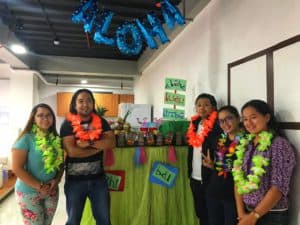Bridging Cultures: Best Practices for Successful Onshore & Offshore Team Integration
One of the challenges to effective onshore and offshore team integration is ensuring that members feel like they are part of a cohesive team without having direct interactions with other team members every day.
Integrating your offshore team into your local operations is key to successful outsourcing.
Businesses that take the time and effort to integrate their teams usually have greater productivity and overall better team satisfaction.
Reconciling your teams is also important to combat the misconception that they’re competing with each other, when in fact they work to supplement each other with offshore teams working to augment and supplement the existing operations of a business, addressing capacity issues or broadening its expertise.
However, cultural differences may still get in the way of seamless integration of both the onshore and offshore teams.
The good news is, companies can always choose to make an effort in addressing these issues early on. Below is a list of things businesses can do to have a smooth onboarding experience.
7 Ways To Improve Your Onshore and Offshore Team Integration
1. Break the ice
Clarify the scope of work to prevent conflicting tasks. Discuss the company’s vision, business objectives, and how both teams can contribute. This way, both teams know their roles within the organisation.
Set clear expectations for each role and communicate consistently with both your offshore and onshore teams to avoid any misunderstanding.
2. Make a genuine connection
Know your offshore team. This may come off as a no-brainer, but learning about what’s important and special to them will make a big difference down the line.
For example, when differences or nuances arise, you can always look at your shared values as a starting point in fixing the situation.
RELATED READING: The Good, the Bad, the Odd: 17 Things I Learnt About Life in the Philippines During My 8-Year Stay
3. Set performance indicators
Set performance metrics to monitor the progress of the offshore team. Reward high-performance like you would with your onshore team.
Reaching out to your Customer Experience Manager is a big boost when you need support in your offshore team’s performance management.
4. Create an inclusive environment
Include your offshore team in company meetings and ask for their inputs in areas of the business where they can.
Celebrate as one – whether it’s birthdays, individual performances, or awards. Reward and give the spotlight to deserving team members.
5. Don’t shy away from asking twice
In the first few weeks, try the simple habit of asking your team if you have clearly explained the project or tasks and encourage them to clarify the details.
Your team will appreciate the extra effort.
6. Create a collaborative atmosphere
Create opportunities where your onshore and offshore teams can collaborate and learn more about each other. It could be a project or a series of training where they can work together.
In the beginning, you may assign a point of contact within your onshore team who can help guide your offshore team as they learn the tools and systems of the organisation.
7. Engage and communicate regularly
Mount weekly or monthly engagement activities where your offshore team can join or facilitate in their office.
Check in as regularly as you can even if your offshore team can already work independently to make sure things are going smoothly.
The Emapta Difference
With over a decade of experience in offshore outsourcing in the Philippines, Emapta has been able to successfully bridge the varying cultures of their clients’ onshore and offshore teams.
The success of our more than 410 clients proves a business’ core team can work together in harmony with their offshore counterparts.
While the Philippine talent has always been known for their cultural adaptability, Emapta has always been able to make onboarding easier with a structural approach.















